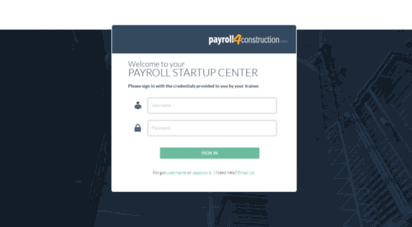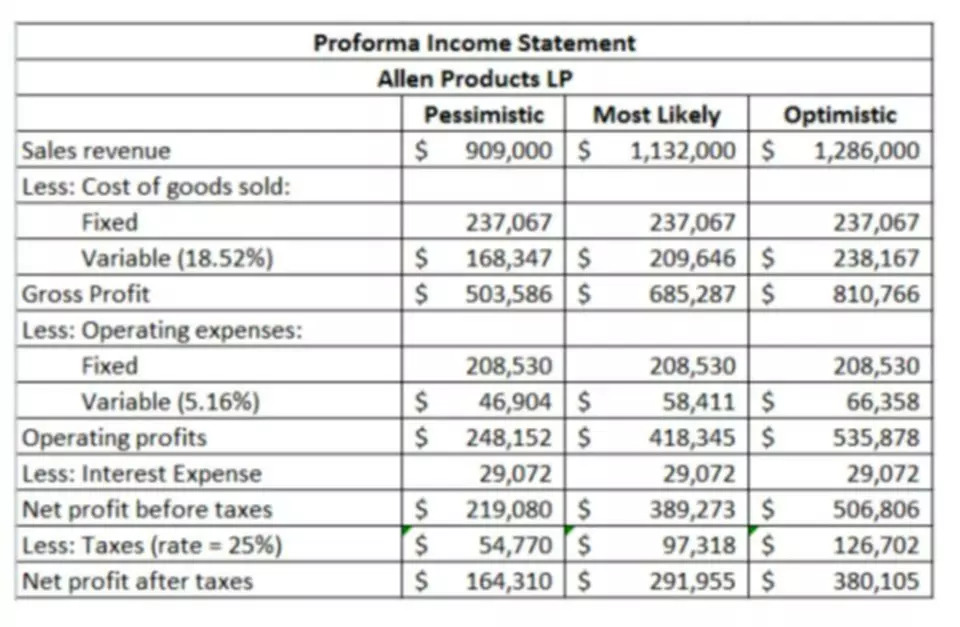Content
It also gives you a chance to try out QBO for all bookkeeping practices without feeling pressured to stick with it if it doesn’t work out. You should also run a P&L report on your new QBO account to ensure all data converted appropriately. After you create your account, go to your QBD terminal and log in as an admin. If you use Gmail, QuickBooks Online has an app that allows you to create and send invoices directly from your Gmail account. After much research and analysis of accounting software, we recommend Intuit’s QuickBooks Online as the best accounting software for small businesses.
Next, you’ll just move down the company records and make sure that everything in the bank statement is recorded there. Throughout the month, certain transactions might get lost or buried away. This can have negative consequences on your banking records as well as your books. If you are not comparing your statements on a regular basis, you are likely to miss such mistakes.
Awards For Quickbooks Online
After you make the deposit at the bank, you’ll need to go into QuickBooks Online and make a matching record. Some transactions from the end of one month did not clear until the next month.
WHO recommends everyone to regularly wash their hand, cover their mouth and nose when sneezing and thoroughly cook your meat and eggs. Try to avoid large groups of people and gatherings, and avoid those that are showing signs of illness such as excessive coughing, sneezing and respiratory issues. There are two main methods for removing undeposited funds from your account. One of the most common mistakes we see in our work with bookkeepers is a build up in undeposited funds. It’s an extremely easy mistake to make and, thankfully, a rather easy one to fix as well.
- Refer to the Schedule reports in the QuickBooks Online section for details on how to set it up.
- Without a solid understanding of your spending, it will be challenging to understand if you can take on new expenditures, such as a large purchase or hiring a new employee.
- You’ll find it in the usual Reports menu, under Business Overview.
- It’s good to familiarize yourself with these settings early on, so you know what’s there.
- In the Group by dropdown, select the category you want to group your data by.
- As your business grows and you need to add more users, you can switch to a higher plan with all your data intact.
There may be different types of errors responsible for this. Like many of its competitors, though, QuickBooks Online supports what you might consider a proactive approach. Intuit has simplified the formerly head-scratching process of recording transfers. You can further document transactions by specifying a category. The site suggests categories automatically, and it’s better than it used to be.
QuickBooks Online offers the most effective blend of flexibility, usability, financial features, and extensibility. As such, it’s our Editors’ Choice winner for most small businesses and their accounting needs. For the very smallest businesses that might not need everything QuickBooks offers, FreshBooks is our other Editors’ Choice pick. Intuit QuickBooks Online is still the best online accounting application for small businesses, thanks to its depth, flexibility, and extensibility. It’s easy to use, well designed, and built to serve a wide variety of users.
Monthly Plans Can Be Expensive
Let’s dig into what causes a build-up of undeposited funds, and how to clean out undeposited funds in QuickBooks. You still need to delete the transaction from your Undeposited Funds list. QuickBooks has a lot of great automation software and technology that makes our lives easier. Often, however, mixing humans with software is a recipe for confusion. 3.) Budgets only convert to Plus and Advanced QBO accounts. 2.) If you have a bill discount in QBD, it converts to a vendor credit in QBO. 1.) If you have an audit trail in QBD, it will not be transferred to QBO.
- If you’d like to see a more visual report, you certainly need to check out the Business Snapshot report.
- With the help of this particular dashboard, you can view small information of the client regarding the balance, contact details, assets, due account, profit, etc.
- LSL is a member of PrimeGlobal, a worldwide association of independent accounting firms.
- You’ll have to reconnect the accounts to QuickBooks Online and make sure you are an authorized user on the account.
They’re composed of real people who make decisions and pass judgement on your business from an external perspective. QuickBooks Online is typically most popular with small to medium-sized businesses. The information that is most important, however, is financial. Another area of management that sometimes gets neglected is communication. Transparent information, and the rate at which it travels, is directly related to how effectively a business can operate and adapt to market changes. One of the most common is that your new products or services simply don’t sell well enough. When you boil it down, the ONLY reason businesses fail is a level of profit that is not sufficient.
When it comes to running a small to medium-sized business effectively, accuracy of records is tantamount to pretty much anything else that is vital to your business operation. It may seem like a hassle to keep and maintain all of your transaction records with zero mistakes, but it is absolutely imperative to do so. When it does clear with your bank , go back and mark the transaction as cleared. Another reason why bank reconciliations are important is that they are an inherent safeguard against embezzlement or other financial crimes. When you perform a bank reconciliation, you must put every transaction under a microscope.
In the Select from multiple dropdown, select the items in the category you want to track. To go deeper into the data, select the vertical ellipsis ⋮ and thenEdit chart. You can group the data by categories, apply filters, or compare the results to a previous time period. For more details, see the steps below for creating a chart from scratch. QuickBooks calculates the industry data based on businesses with similar revenue in your client’s geographical area.
Quickbooks Online
I also suggest you look at the resources available from Intuit. Finally, I recommend that when he is ready he contact a CPA to look at what he has entered and how he has it structured so that he is getting things set up well right from the start. Inventory reorder pointsAdd reorder points to your inventory items and see information on the https://business-accounting.net/ product/service screen as when you have low stock. You can also import a lot of invoices into QBO at once for faster processing. QBO AdvancedDiscounts for your clientsAs of September 2019, you can get your clients 50% off the retail rate for 6 months. Mobile AppThey are changing the layout so that it is easier to navigate on the phone.
This will not affect the overall time data stays in the product; that remains unchanged. However, this feature is only available for QuickBooks Online Advanced users. PandaDoc also offers you a library of customizable, pre-canned templates that you can drag and drop to create forms. There are many online communities and resources that can guide you through the process of setting up your account.
With the Custom Fields feature accountants can track and analyze unique Dada at any level of granularity. The software supports 48 custom fields with up to 12 fields available for each vendor, customer, sales forms, purchase order, and other expenses. Users can sort, filter, group by, and display information and columns of fields in three reports. They can create a custom contact list, a vendor contact list, and unpaid bills report. Intuit has added a great new step in onboarding since last year that unfortunately is only available to brand-new users.
Quickbooks Online Advanced
You can also mark transactions as billable to a customer, add attachments, create a rule, and so forth. Under the Advanced tab, you can specify even more options, such as your accounting method , business type , and home currency. It provides automation tools that you can use or not, including the option to automatically invoice unbilled activity and automatically apply bill payments. You also have the option to activate tools like project and time tracking. By connecting with the internet in the Cloud, QuickBooks Online keeps you instantly and continuously aware of every aspect of your business’s accounting.
Before choosing a bookkeeper or financial expert to join your team, it is important to find out if they know how to use your preferred accounting software. Even if you have limited finance experience, you can find the information you need to carry out your basic bookkeeping needs. There are various sample charts of accounts and templates to get you started. You can monitor all your revenue streams from one dashboard, keeping a pulse on all your top money makers.
- Press ctrl + E to edit the selected transaction in the register.
- Finally, in the “Deposit to” drop-down menu, select the bank account you want to deposit the funds into.
- You can also use this article for more details on how to create custom charts to track your business performanceand on what roles you can give access to your members or employees.
- When you log into a client’s company through QuickBooks Online Accountant, theOverviewtab will appear at the top of the sidebar menu.
- There are plenty of tools, though, that can be plugged into your product and can pull the vital metrics from there.
The Silver edition is the base level, which is $850 for your first year (30% off). The Gold level will run you $950 for the first year (40% off), and Platinum is $970 for the first year (50% off). You can find a full comparison of QBD versions on the QuickBooks website as well. QuickBooks has been a staple in the bookkeeping business for almost four decades. As such, it makes sense to convey your company’s financial information in the most detailed, comprehensive way possible.
Copyright ©2022 Planergy
When you purchase the bookkeeping package, you get a personal bookkeeping expert providing virtual assistance to your accounting needs. This assistance can include help with bank reconciliation, expenses, running reports, setup, tax support, etc. If your business has advanced financial needs, you may opt to add extra features like inventory tracking, invoicing, bill pay, and sales reporting.
As such, calculating MRR based on QBO revenues is more like calculating an average monthly revenue over a certain period, rather than an actual MRR metric. You could technically pull your revenue numbers and split them into months in a spreadsheet.
And, you’ll run into issues if you need to invoice from two different business names/segments/locations if you are set up that way. It might be time to look for a third party app if you are running into this issue. You’ll have to reconnect the accounts to QuickBooks Online and make sure you are an authorized user on the account. Intuit’s blog post qbo business performance tab for this update has instructions on how to add an authorized user to the account. Furthermore, using Dancing Numbers saves a lot of your time and money which you can otherwise invest in the growth and expansion of your business. It is free from any human errors, works automatically, and has a brilliant user-friendly interface and a lot more.
Freshbooks Accounting
Custom charts, as the name suggests, offer a higher level of customization. They take a little more time to create than quick charts, but many businesses prefer them because of their customizable properties. Grant access to your accountants and multiple users so they can update sales, expenses and updated timesheets. The QBO Dashboard provides one spot to launch most new transactions and also monitors your business performance. With features like these built right into the software, business owners are one step closer to understanding the story of their business. The Business Overview tab lets you know the business performance by showing metrics such as Invoices, Sales, Expenses, Profit & Loss, etc.
QuickBooks’ mobile app has two tabs at the top of the home screen that let you toggle between the dashboard and recent activity. The dashboard, which is also accessible through the new Today icon at the bottom of the screen, has improved noticeably since last year. Links to commonly used functions appear at the top, followed by a to-do list and a series of interactive charts and lists highlighting key financial data.
The New Quickbooks Online: Better Design, Navigation, Performance
Its selling point lies in its simple accounting language, helping you determine what you want to do with your transactions. QuickBooks Online may be one of the most popular accounting products among experts. Many factors work in its favor, like industry dominance, scalability, ease of use, etc., which makes it a strong choice for many small business owners. The only way to add this information is to then edit each transaction, one after the other, after importing the CSV files. What happens when you have years of accounting data and bookkeeping to import? The PandaDoc integration is one of the latest additions to the premium apps available on QuickBooks Online.







